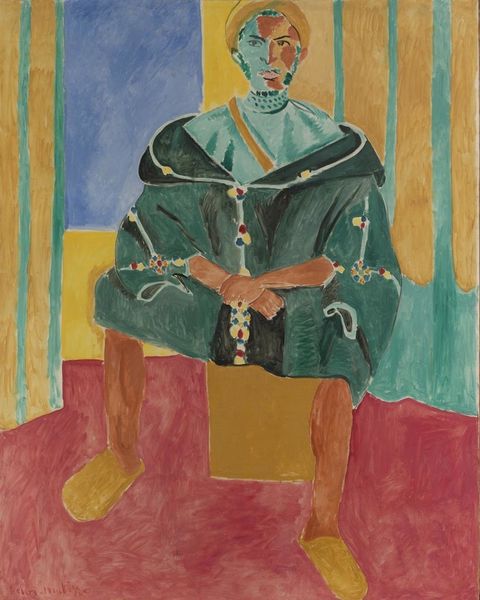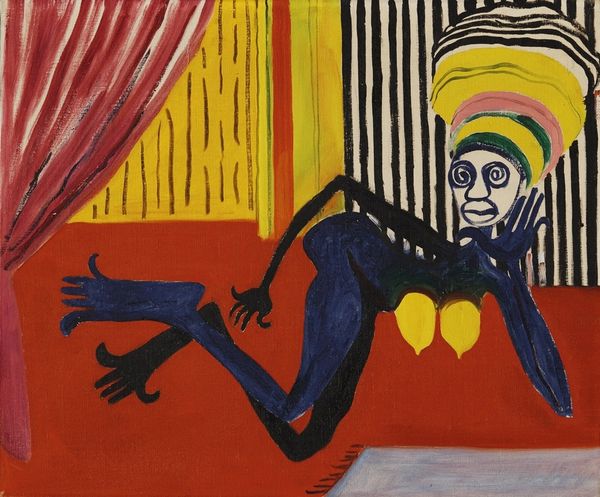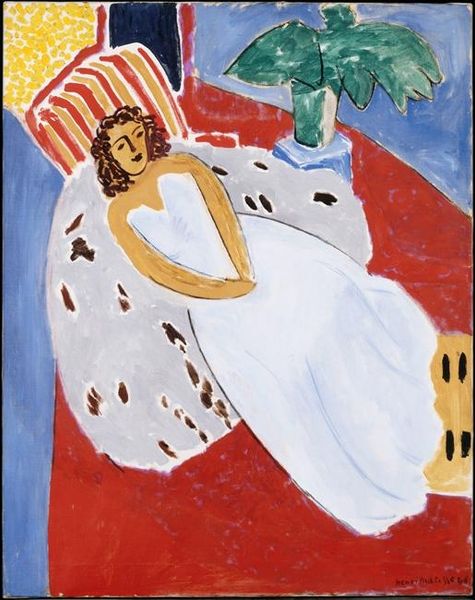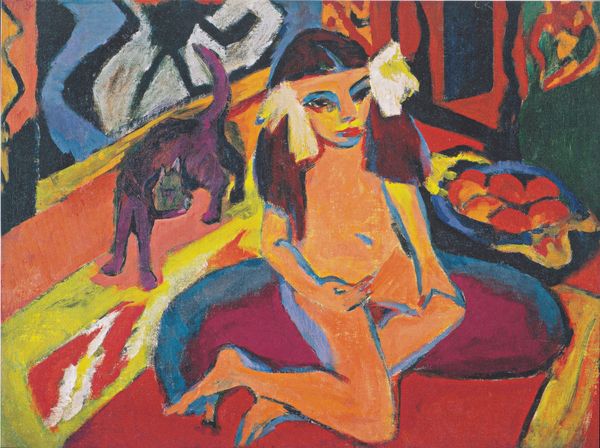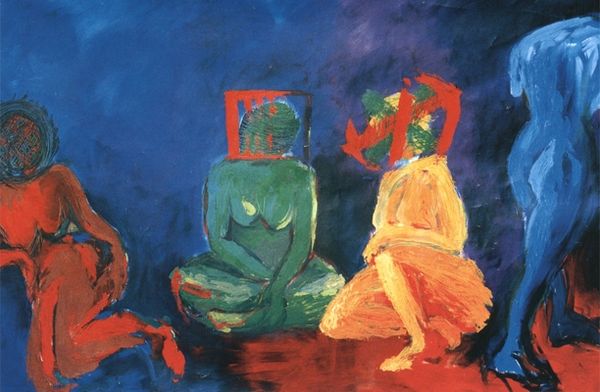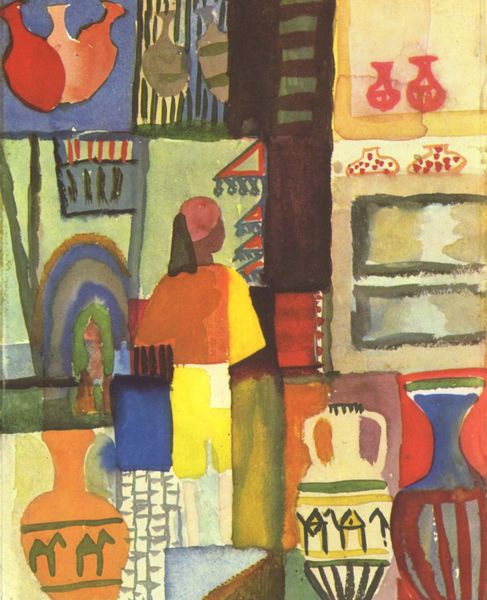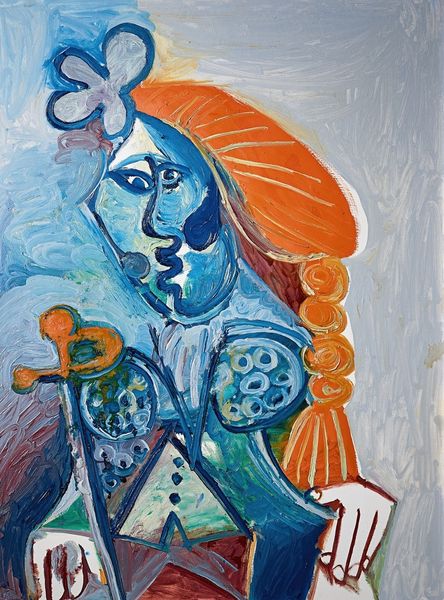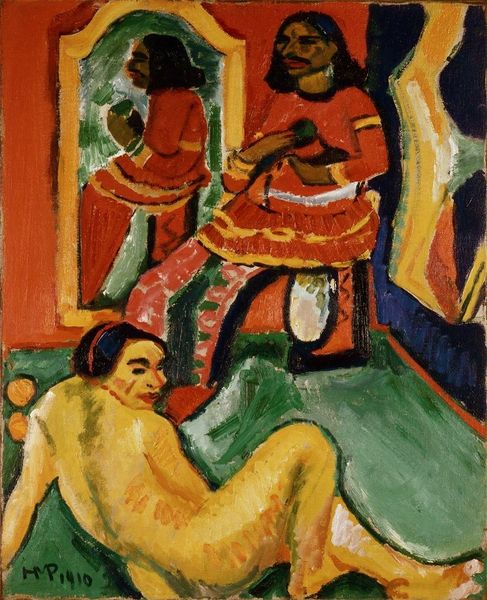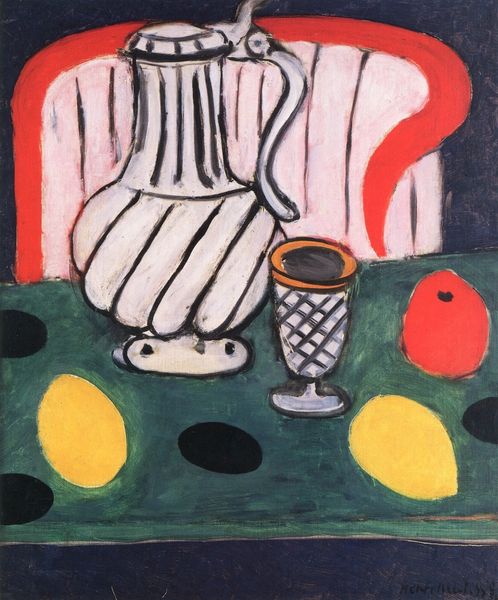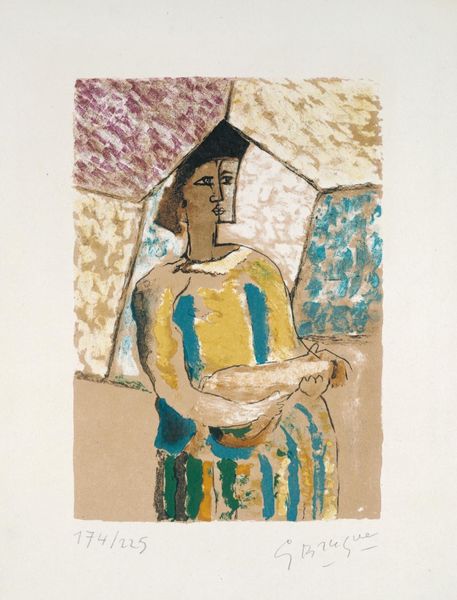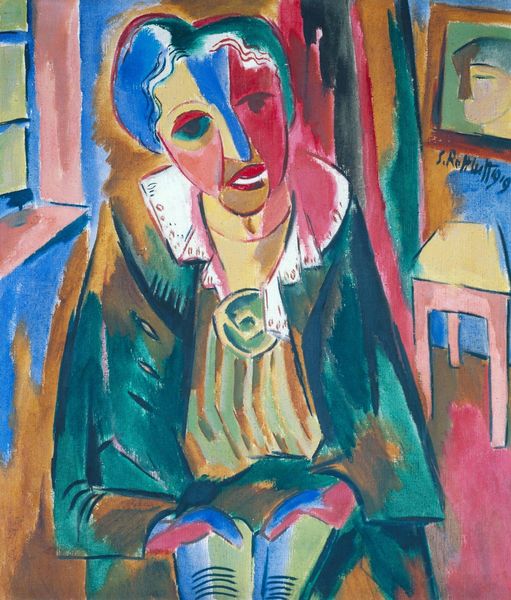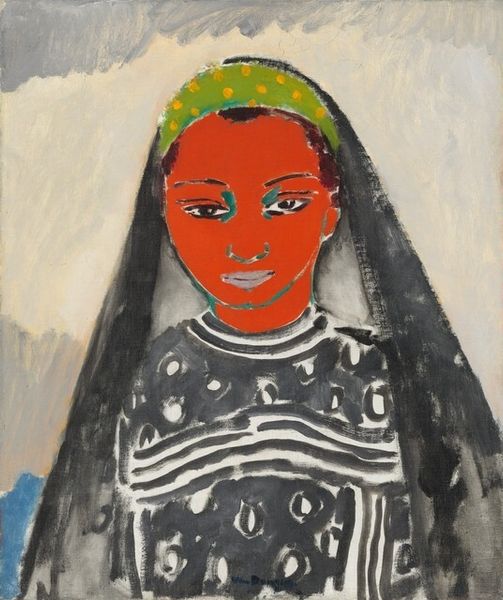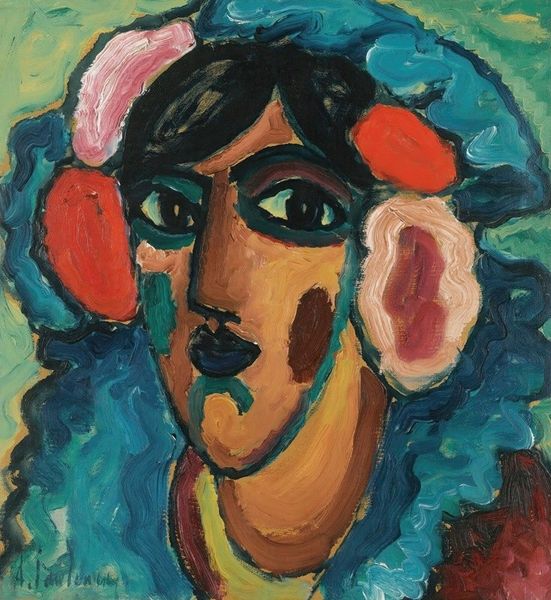
oil-paint
#
oil-paint
#
german-expressionism
#
figuration
#
oil painting
#
expressionism
#
naive art
#
genre-painting
#
portrait art
#
expressionist
Copyright: Public domain US
Editor: Max Pechstein’s "The Big Indian," painted around 1910 using oil paint, strikes me as simultaneously vibrant and… almost unsettling in its depiction of the figure. How do you interpret this work, particularly considering the context of its creation? Curator: Well, what you're picking up on is very likely Pechstein's complex engagement with colonialism and primitivism, both strong currents in early 20th century Europe. Consider the title – “The Big Indian” – which itself can be seen as a reflection of how Western society exoticized and generalized non-Western cultures. What about the sitter’s posture and garb -- what statements can you infer from this portrayal? Editor: He’s seated, almost enthroned, but there's something theatrical about his clothing. I'm just not sure *who* the implied audience would be here. Is Pechstein celebrating this person, or is he participating in a kind of cultural appropriation and idealization? Curator: Exactly. It's that tension which is really important. As an Expressionist, Pechstein sought to capture inner feeling, but within a specific socio-political frame. Think about the art market at the time; depictions of "exotic" cultures often catered to European fantasies. So, where does Pechstein's work fall within that dynamic? The bright, jarring colors themselves draw attention to the *act* of representation, I think. Is it meant to confront our gaze or simply indulge it? Editor: It sounds like this work, intentionally or not, reflects the power dynamics of the time, highlighting the Western gaze and the commodification of other cultures. The artist presents this almost performative identity. Curator: Precisely. By examining the work's place within these historical discourses, we can better understand its complexities. It’s not just about what's on the canvas, but also the circumstances surrounding its creation and reception. Editor: I see. So, understanding the socio-political environment of the time helps us decipher the message of this particular piece. Thanks! Curator: Absolutely. It enriches our appreciation, hopefully revealing not just the beauty but also the often-uncomfortable truths embedded within the artwork.
Comments
No comments
Be the first to comment and join the conversation on the ultimate creative platform.
